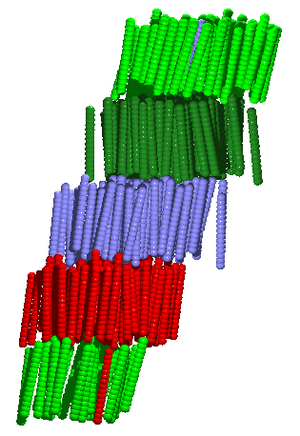Smectic phases: Difference between revisions
Jump to navigation
Jump to search
Carl McBride (talk | contribs) mNo edit summary |
Carl McBride (talk | contribs) No edit summary |
||
| Line 11: | Line 11: | ||
==References== | ==References== | ||
#[http://www.oup.com/us/catalog/general/subject/Physics/MaterialsScience/?view=usa&ci=9780198517856 Pierre-Gilles De Gennes and J. Prost "Physics of Liquid Crystals" (1995)] | #[http://www.oup.com/us/catalog/general/subject/Physics/MaterialsScience/?view=usa&ci=9780198517856 Pierre-Gilles De Gennes and J. Prost "Physics of Liquid Crystals" (1995)] | ||
#[http://dx.doi.org/10.1002/cphc.200500472 Jan P. F. Lagerwall and Frank Giesselmann "Current Topics in Smectic Liquid Crystal Research", ChemPhysChem '''7''' pp. 20-45 (2006)] | |||
[[category: liquid crystals]] | [[category: liquid crystals]] | ||
Revision as of 15:29, 18 July 2007

The work smectic comes from the Greek for soap (). All of the smectic phases are layered, belonging to the symmetry group.
Smectic A phase
In the smectic-A phase each layer is a 2-dimensional liquid, having the symmetry in the Schoenflies notation.
Smectic B phase
Smectic C phase
The smectic-C phase has the monoclinic symmetry .



